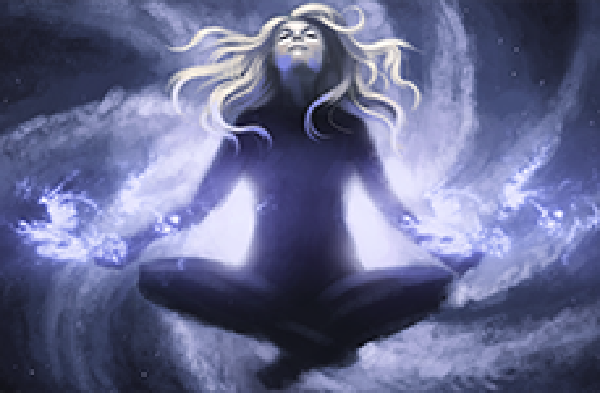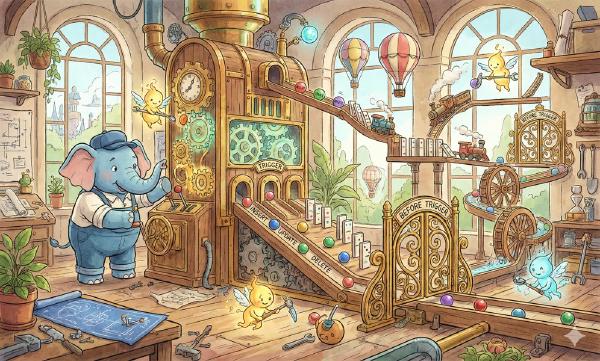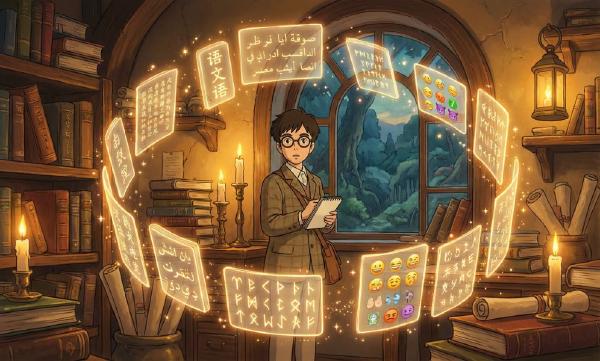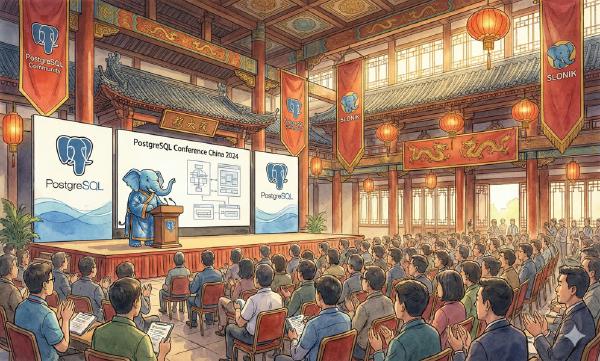Levels of Knowledge#
When we say “learning knowledge,” what exactly are we talking about?
When we say someone is “smart,” what exactly do we mean?
Through observation and contemplation, we can divide the process of deepening understanding in the mind from accepting knowledge to the highest level of “intuition” into four stages: knowledge, understanding, consciousness, and intuition. The overall function of cognition is continuous and monotonically increasing, but there is a leap between the stages of understanding and consciousness. So let us clarify what these four terms actually mean.
First Level: Knowledge#
Simply put, knowledge is correct information stored in the brain. In other words, all correct information stored in the brain is called knowledge, making “knowledge” a very broad term. “Correct” information fundamentally means information that conforms to reality, although it may not yet be verifiable - this is merely a theoretical statement.
Knowledge can come from objective experience (including life experiences) or from mental reasoning and creation. When we read a book, the information recorded in our minds becomes knowledge. Knowledge transforms from symbols on paper into abstract concepts in our minds.
The structure of knowledge is complex with many levels. It can be factual judgments like “apples are red,” logical propositions like “if you drop the database, you should run,” or operational instructions like “swipe the screen and tap the camera icon in the bottom right corner to take a photo with an iPhone.” In the most abstract sense, knowledge can be viewed as triplets consisting of two points and one line: concept A and concept B have relationship C (recursively defined: relationship C and this knowledge itself are also concepts).
Knowledge can be a conceptual node in mental space, or rather, a data object in memory. However, just as in computer science information = bits + context, isolated knowledge concept nodes are meaningless - they must be connected to other concepts. For example:
Upon seeing short sleeves, one immediately thinks of white arms, immediately thinks of the naked body, immediately thinks of genitals, immediately thinks of sexual intercourse, immediately thinks of hybridization, immediately thinks of illegitimate children. Only at this level can Chinese imagination make such leaps.
—— Lu Xun, “Random Thoughts” from Et Cetera
Upon seeing a process, one immediately thinks of
top, ps, killcommands, thinks ofpid, ppid, thinks ofexec, fork, opensystem calls, thinks of file descriptors and process tables, pipes, scheduling, priorities, registers, status words, signals, ELF format, working directory, thinks of deadlocks, PV operations, semaphores, critical sections. Thinks ofbash, thinks of executingrm -rf /withbash, thinks of dropping databases, thinks of databases…
When concept nodes form networks, we move from knowledge to the level of understanding.
Knowledge vs Understanding#
Let’s do an experiment. Stare at and repeatedly read the following line of text for a long time:
知道知晓知识知足知命知府知事知了知青知悉知心知音认知知府知州知县知会知己知交知名知根知底知己知彼知冷知热上知天文下知地理知其一不知其二知其然不知其所以然知难而退知情达理知人知面知书达理知无不言知遇之恩知人论世知人善任知子莫若父知知知知知知知知知知知知知知知知知知知知知知知知知知知知知知知知知知知知知知知知知知知知知知知知知知知知知知知知知知知知知知知知知知知
After staring at the same Chinese character for more than a certain period of time, you might experience what foreigners experience when looking at Chinese characters. Readers may find that the character begins to look very strange and unrecognizable. It no longer seems like a text symbol but becomes a picture composed of “矢” and “口.” This phenomenon is called “cognitive saturation” in psychology. This situation is equivalent to stripping away the connections between the text and other concepts. After losing these connections, we can no longer understand the character. This example well demonstrates the difference between knowledge and understanding.
Second Level: Understanding#
Here “understanding” is used as a noun, representing understood knowledge, also called living knowledge. For a piece of information (i.e., knowledge), if more related information is obtained, an information network centered on that information is formed - an information system. At this point, that information is called understood information, or understood knowledge, or living knowledge.
Of course, understanding of knowledge also has degrees. In fact, there is no absolute clear boundary between basic knowledge and completely understood knowledge - it’s a continuous, ascending process. A significant characteristic of understanding knowledge is the degree of systematization of knowledge.
Taking Chinese characters as an example, when we read the character “知” (know), we immediately form understanding. This character immediately becomes an abstract symbol in our minds while activating a series of related concepts: knowledge, knowing, cognition, fame, intellectual property, intellectuals… and so on. An isolated concept has no meaning for thinking; only when it connects with other concepts does understanding emerge.
Figure: Concepts activated in the author’s mind upon seeing the Chinese character “知” - guaranteed by Party loyalty that no search engines were used#

Regardless, both basic and understood knowledge are stored only as external knowledge and cannot yet be called one’s own knowledge. They may still be “forgotten” (understood knowledge being “forgotten” actually means sinking from the surface of memory into the depths of the mind), but these forgotten parts don’t truly disappear - they will continue to exist as nourishment for the next stage.
The essence of understanding is systematizing knowledge. However, at the “understanding” stage, the network of knowledge concepts still exists as an explicit structure in the mind. This is like a program - given input, it can process according to a series of rules and produce output. Using understood knowledge is like applying rules, following patterns, following procedures to solve problems, and this process is conscious and deliberate. As understanding deepens and is repeated, conscious processing rules are gradually “burned” into the brain’s hardware, much like burning software logic into FPGA to become hardware logic, forming consciousness.
Third Level: Consciousness#
After a certain period of accumulation, understood knowledge may undergo an internal leap or sublimation, manifested as “rumination” and awakening of existing understood knowledge - a self-rediscovery of existing knowledge, called conscious knowledge, or simply consciousness knowledge.
Conscious knowledge has several major characteristics:
- This knowledge, having been rediscovered by oneself, has become one’s internal information. One may not even remember where it came from, feeling as if it has always been one’s own knowledge.
- Conscious knowledge can be applied naturally - it can be used spontaneously in an unconscious, natural state following thought, without requiring conscious direction.
- Conscious knowledge no longer involves issues of forgetting, memory, and recall. It seems that conscious knowledge doesn’t exist in the cerebral cortex but below it, forming fixed structures. Compared to unsublimated knowledge, the storage state of conscious knowledge can be compared to data in computer memory - memory information can be directly accessed, while external storage information must go through memory (equivalent to conscious direction) before it can be used.
Usually, what we call political consciousness, positioning awareness, design consciousness, etc., refers to this state that doesn’t require deliberate direction: no need to think, let intuition take over the response. Compared to learning knowledge and skills, perhaps consciousness in motor skills is easier to understand: once anyone learns to walk, upright stepping immediately becomes an instinct that doesn’t require conscious participation, but the difficulty of developing bipedal walking robots shows that this is actually quite a complex skill.
The essence of conscious knowledge is making systematized knowledge intuitive, burning it into “muscle memory.” After entering the consciousness level, facing problems produces intuition. Intuition is the key difference between experts and skilled practitioners. Conscious people, when facing problems, often need no help from logical reasoning to immediately locate key points and respond as naturally as flowing water. Experts compared to ordinary people are like ASIC/FPGA hardware encoding versus software logic - knowledge and experience have become instinct, allowing them to free up attention for higher-level creative thinking activities. However, correspondingly, burned-in hardware performs well but lacks flexibility, so many experts who specialize too deeply in one field often fall into tunnel vision, which is why many outstanding achievements are completed by young and middle-aged people.
Fourth Level: Intuition#
Intuition can also be called awakening, enlightenment, insight, or induction. It is more profound than consciousness, manifesting not only as “rediscovery” of knowledge but also having a deeper sense of discovery. This “sense of discovery” means that what intuition produces is not necessarily practical inventive or creative thought, but rather a kind of understanding with emotional and psychological coloring, a kind of passion that can often only be experienced but cannot be fully “expressed” - the so-called “can be understood but not verbalized.” Using a Buddhist term, this state is called “prajna.” Because it carries internal emotionality and is not ordinary information, “the Dao that can be spoken is not the eternal Dao” - once expressed in language, this intuition transforms into ordinary information, at most rising to understood information through interpretation. Therefore, speeches, reports, and the like can at most promote the occurrence of consciousness or intuition, but cannot directly impart intuition like ordinary information transfer.
In summary, intuition is an advanced stage of consciousness. It has no clear boundary with consciousness and is a continuously distributed higher stage. It is comprehensive knowledge that has sunk deeper into the mind (it is no longer single knowledge, nor a simple collection of knowledge, but their fusion - like sediment at the bottom of the ocean, it has become a new “mineral deposit”). What is “realized” and what is “conscious” knowledge are both “memory” knowledge - knowledge that truly belongs to oneself. Intuition is a thinking tool, a methodology. It is the most essential part of knowledge, a highly condensed and generalized form of patterns. It is the product of the integration of all knowledge you possess. If understanding is systematizing knowledge within one discipline, then intuition is connecting and comparing knowledge across disciplines, mutual verification, and mutual reference. In ancient times, mathematics, science, and philosophy were once one family, and we can go even broader by including art. Through intuition, scattered and mixed knowledge fragments from different disciplines are combined into an organic whole.
The essence of intuitive knowledge is fusing conscious knowledge from all fields and establishing cross-domain connections and mappings. If consciousness brings intuition, then what intuition brings is insight. Cross-domain knowledge fusion can be considered the source of innovation. This is what is meant by drawing inferences from one example or making analogies.
Intuition and inspiration are not the same thing. Inspiration can manifest as the creation and invention of new things - it’s a point-in-time flash that can be encountered but not sought, declining with age. Intuition mainly manifests as deeper, more abstract sublimation of existing knowledge, with anticipatable quality. We can only say it can approach inspirational creation, but it’s not yet inspirational creation.
Usually when we say someone is “smart,” we don’t mean how deeply they understand a particular knowledge, but rather that this person has high intuition. A person’s consciousness and intuitive “ability” are latent within themselves - they can only accept inspiration, induction, stimulation, and development from external factors, but cannot be transmitted, transcribed, or copied. On the other hand, the “background” for a person to develop consciousness and intuition also lies in their own long-term knowledge accumulation. Intuition is an extremely precious attribute - both internal and external factors are important; talent and effort are both indispensable.
Methods of Learning#
Learning can only acquire ordinary information (ordinary knowledge). With good teachers and good books as guides, at most it can rise to understood knowledge. In other words, what learning can acquire is all external information. Advanced knowledge like human consciousness and intuition cannot be directly obtained through learning. Comparing to machine learning, teachers and books are like labeled datasets, but the human brain is not like models - although there are datasets, training can only be done by oneself. As the saying goes, “The master leads you to the door, but cultivation depends on the individual.” Knowledge from learning can only lay the foundation for consciousness and intuition, but only through the quantitative change of learning accumulation can the qualitative change of consciousness and intuition occur. This is the basic relationship between learning and wisdom (here wisdom is mainly manifested as consciousness and intuitive ability).
Those who possess intuition, or who have entered the intuitive period, gain vastly different levels of understanding during the same learning process. “Reviewing the old to understand the new” is such a principle: sometimes when reading a book, seeing insights and thoughts left by predecessors can make one applaud and produce tremendous resonance and empathy. But if one hasn’t entered the intuitive period, they might just treat them as ordinary information and knowledge, or even mistakenly think that the masters are showing off, advertising, or bragging. Such misunderstandings are common, but there’s no need to clarify - once you learn to that level, you’ll naturally understand. If you can’t learn it, saying it won’t help you understand.
Generally speaking, intuition is closely related to both the breadth and depth of knowledge. If we view knowledge and concepts as a network and understand the activity level of traffic in the network as the level of intuition, then knowledge points are nodes in the network, the depth of knowledge is the throughput of nodes in the network, and the breadth of knowledge is the number of nodes in the network and the complexity of connections.
Intuition is a mineral deposit that everyone has, but different people have different depths (spiritual roots), and even the same person has different depths at different age stages. Generally speaking, undergraduate study is the earliest starting point of the intuitive period, and doctoral study is the best stage of intuition (age 25). But different people will certainly vary. Generally speaking, in elementary and middle school learning, human memory is at its strongest, but this stage belongs to pure memorization of ordinary knowledge, purely in the category of rote learning. Entering high school and undergraduate study, our rote memory ability declines, but our understanding ability is greatly enhanced. At this stage, we are mainly busy with knowledge storage and understanding - this is the most active period of understanding-based memory. Some talented people may already develop seeds of intuition during this period. Finally, through continuous learning, another more important learning characteristic (thinking characteristic) becomes increasingly strong - this is entering the “intuitive period.” At this time, they will naturally and unnaturally “ruminate” on knowledge they are already familiar with, producing new understanding and deep-level consciousness. Its characteristic is: once knowledge enters intuitive thinking, it naturally becomes one’s own, while knowledge that hasn’t reached the intuitive level will gradually be forgotten over time.
Through learning, only knowledge and understanding can be acquired, so how can knowledge and understanding be sublimated into consciousness and intuition? Of course, only through practice - practice produces true knowledge. Besides applying knowledge to solve practical problems as much as possible, the most effective practical means is teaching. Teaching and learning benefit each other - teaching and learning are complementary. The process of teaching others is also a process of self-learning and self-reflection. Corresponding to the four levels of knowledge are four levels of teaching: reading from scripts, translation, lectures, and writing. Teachers who read from scripts are merely synonymous repetition of knowledge, misleading students; translation is the work of forming understanding of a series of knowledge and restating it. Those competent in translation must already have a clear grasp of knowledge in their field, with systematic mastery; lectures are the process of directly helping others form understanding - only those who can handle domain knowledge effortlessly, with consciousness penetrating to the bone, have the ability and qualification to teach and resolve doubts in the classroom; writing is a form of teaching that transcends time and space, much more difficult than face-to-face teaching - only those full of intuition can write classic works.








